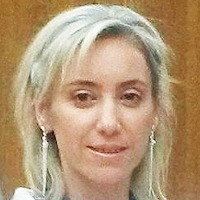Burden of hearing loss in Subsaharan Africa: Snapshot from an ENT clinic in Nigeria
Published on: 31st December, 2019
OCLC Number/Unique Identifier: 8512989994
Background: Disabling hearing loss is a prevalent public health issue, with significant impact on patients’ communication. The disability associated with hearing loss depends on the severity of the hearing loss. There are limited rehabilitative measures in resource challenged environment. This study assesses the incidence, the factors for hearing impairment and the management outcome.
Methods: A descriptive three-year chart review of patients managed for hearing loss in a tertiary health center in a developing country. The data collected include demographic data, clinical presentation and risk factors for hearing loss, audiometric reports, rehabilitative measures and management outcome.
Results: The patients with ear symptoms managed within the study period were 1350, of whom 498 (36.8%) had hearing loss of varying degrees. These included 145 (29.1%) males and 353 (70.9%) females with male to female ratio of 1:2.4. The age ranged from 8 to 80 years (median age of 35.7). Disabling hearing loss in the better-hearing ear occurred in 216 (43.4%) of cases. Increasing age and chronic supportive otitis media were associated with disabling hearing loss. The hearing thresholds improved with hearing aids and ear surgical procedures; nonetheless the patients’ rehabilitation was impaired by limited resources.
Conclusion: There is poor rehabilitation of people with hearing loss, though management outcome is commendable in a few of them. Health education will reduce the risk factors for disabling hearing loss and improved rehabilitative measures are needed for these individuals.
Sural nerve conduction study: Reference values in the Algerian population
Published on: 20th September, 2022
Objectives: The sural nerve is the most tested sensory nerve in the lower extremities in the electrodiagnostic assessment of peripheral neuropathies. This study presents the reference values of the sural nerve conduction study (NCS) from a significant sample of the Algerian population. Methods: This is a prospective study of right sural NCS in healthy subjects based on the later recommendations of AANEM-NDTF. The nature of the distribution of each electrophysiological parameter was therefore determined. The lower and upper limits were calculated by using the 5th and 95th percentiles respectively and a logarithmic transformation was performed for Sensory Nerve Action Potential (SNAP) amplitude distribution. Results: 115 subjects aged between 20 and 60 years were selected, including 58 women and 57 men. Unlike Sensory Nerve Conduction Velocity (SNCV), the distribution of SNAP amplitude is not Gaussian. The lower limit of SNAP amplitude was 7.70 µV when using the 5th percentile and 6.80 µV by using the Standard Deviation (SD) method after log transformation. Similarly, the lower limit of SNCV was 43 m/s. The SNAP amplitude was greater in women and decreased with age, height and BMI. Conclusion: The values found in this study are comparable to those published in the literature. It may be more appropriate to determine the reference values using percentiles as recently recommended by several authors.




